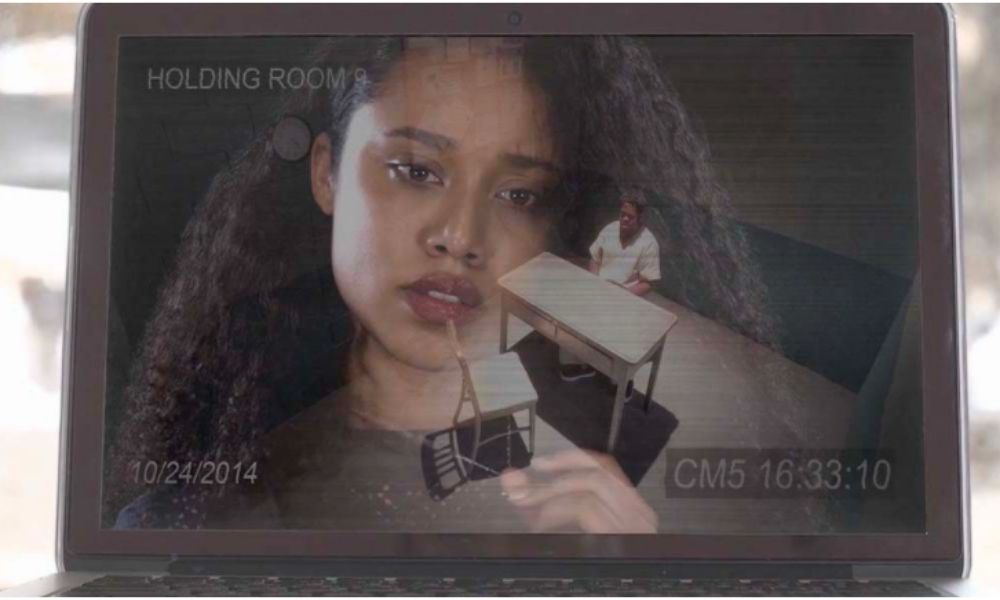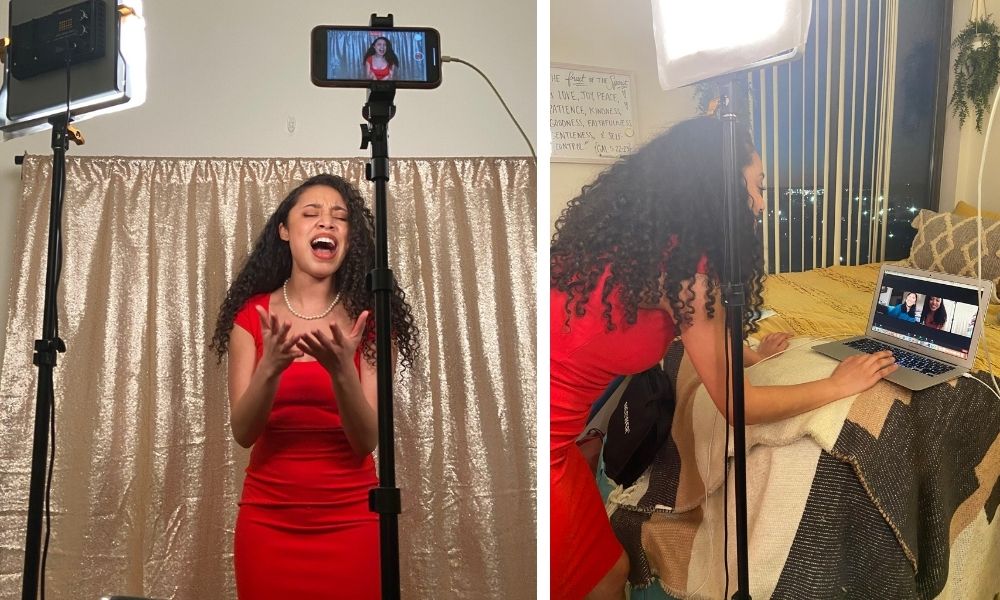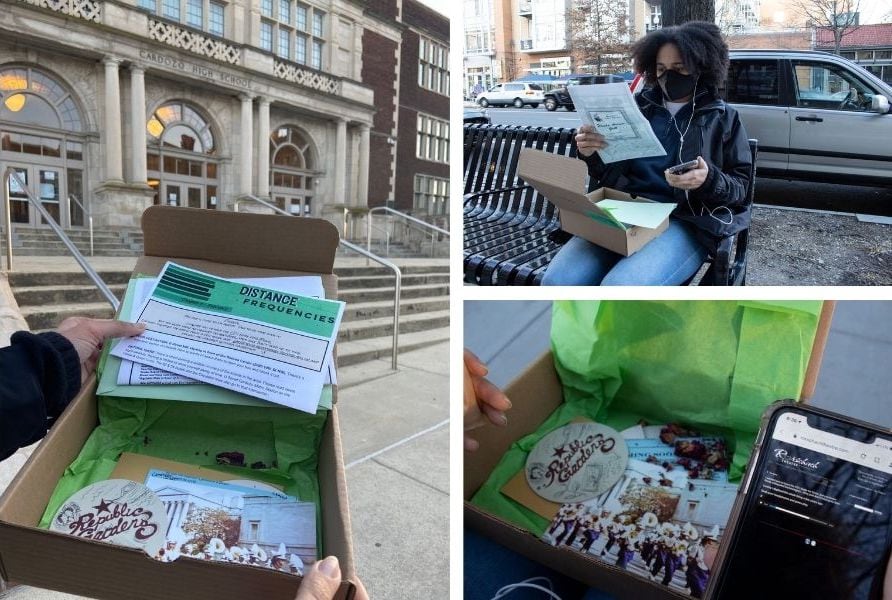At first, the shutdown of live theater came as a shock. Then, once artists were left to think quick on their feet, an extraordinary evolution began to happen.
At the beginning of the coronavirus pandemic, the live entertainment industry was crippled, leaving thousands of artists out of work and theaters in survival mode. For theater, which is predicated on bringing people together, staying six feet apart is out of the ordinary. Yet despite all odds, live theater has found new ways to draw an audience, and many of these innovations may change the way live theater is viewed forever.
One year into the pandemic, the performing arts have re-emerged by transitioning to technological platforms such as film, online recordings, audio, and immersive theater. The explosion of digital productions over the last year has not only changed the way live theater is consumed but is giving artists looking to break into the industry hope that theater is still alive.
Imani Branch, a musical theater major at Howard University, was like most aspiring artists prior to the pandemic. A year ago, Branch wrapped up the school’s production of Pippin playing Fastrada, a huge role for the rising senior. She was ready to propel her career forward with auditions and projects with various companies over the summer. She was exhausted and excited for the next chapter. Once the pandemic hit, Branch’s goals altered.
“I’ve completely shifted gears on what I want my focus to be,” Branch said. “I thought that post-graduation I would be in New York pursuing Broadway. But now, I’ve actually done more film projects.”

Film productions of theater have presented the option of performing with smaller cast sizes. A production that once contained over 30 cast members now needs only 3 or 4 at a time to film a scene. Filming has also allowed for a more controlled environment for behind-the-scenes crew.
The arts department at Virginia Commonwealth University (VCU) tried its hand at Spring Awakening, a classic rock and roll musical set in late 19th century Germany about teenagers coming of age. One would think performing Spring Awakening in the midst of a pandemic would be against all CDC guidelines, but with face shields, gloves, limited cast size, and no limitations on costume changes, filming has become a safe new way of producing theater.
“Our film crews are wearing masks and face shields. We all have limited exposure to the actors,” said Delaney Theisz, student costume coordinator at VCU. Spring Awakening is known for its intimate scenes. which are harder to film in a pandemic, so they are doing close up shots with less people in the room.”

While the future of live theater may require more precautions for safety, film productions of theater are giving audience members up-close and personal angles that we don’t normally see. Along with issues of safety, theater on film has been able to move into tackling other issues such as consent.
“Spring Awakening addresses a lot of intimacy,” Theisz continued. “We have had intimacy coaches walk through every single scene, making sure that everything is correct and that everyone is consenting to what is being seen whether you’re actually performing that action or you’re watching it. I think that’s going to be a major step if we’re going to start filming more theater.”

For companies and theaters unable to film live productions, Zoom and other web camera methods have come into play for performances during the pandemic.
According to a recent study by JCA Arts Marketing, a consulting firm that develops strategies for the arts, 43 percent of the digital audiences viewing films produced by live theater have never attended in-person performances at the theater presenting the film.. Kendra Rai, three-time Helen Hayes Award–winning costume designer and professor at VCU, says that one of the biggest revelations she’s seen in live theater’s transition to film is how it has opened doors for new and bigger audiences.
“VCU performed She Kills Monsters last fall, and all of a sudden, all of these high schools from California and Seattle wrote to us asking if they could have rights to the play,” Rai said. “All of a sudden people everywhere could see the show when they never would have been able to before.”
Not only is Zoom allowing for more exposure; it is also opening doors for unique and different storytelling.
Following the killing of George Floyd, American theater, like many industries, was called out for its racism and unequal representation in shows. Theaters have made a pledge to start hiring and allowing people of color to produce more stories that actually impact the American population. Because of these changes, artists and writers have had more opportunities to dive into topics that may not have stood a chance in mainstream theater. Platforms such as Zoom and Microsoft teams have been able to make stories happen.
While theater has vowed to make better strides for equity in the future, artists of color are hoping that these changes are here to stay.
Click here to listen to interview with Imani Branch

“I think that in regards to race and inclusion, and LGBTQ+ stories, there’s definitely a push for that right now,” Branch said. What I want to be cautious of is that it isn’t a fad.”
Click here to hear Imani Branch recording a self-tape.
Audio productions of live theater have come to light in entertainment during the pandemic.
The medium began gaining traction prior to the pandemic through Audible, an online audiobook and podcasting service owned by Amazon. Since COVID-19, the medium has created a niche in live theater and has expanded the arts to other digital platforms.
Kalen Robinson, a working actress from Atlanta, Georgia, is utilizing the audio-only social media app Clubhouse to perform live cabarets.
“Clubhouse is becoming a big theater medium. It’s kind of like radio plays. Audience members can join rooms and just listen to the music at no charge,” Robinson said.
As the medium continues to gain popularity, small and medium-sized theaters are now producing their own audio plays, or what some are calling podcast playlets—theater works produced as a series of podcasts.
As theater continues to play by its own new rules, another medium that theaters are delving into is immersive and installation storytelling.
Rorschach Theatre in Washington, DC, is known for creating theater in unusual and immersive forms. In true Rorschach style, the company created a subscription series called Distance Frequencies, which happens far from any conventional theater space. Audience members are sent directions to specific locations together with a box of artifacts and objects that tell an overarching narrative over a period of months.

“Weirdly enough, we ended up being well suited to this period,” said Jonelle Walker, Rorschach associate producer and company member. “In the beginning of COVID, we expected we were going to have 60 subscribers to Distance Frequencies. And that, even at the time, felt ambitious. Now we are six months into the project and we have 395 subscribers. It’s now the highest-grossing show we’ve ever done, and this is the best financial year we’ve maybe ever had.”
The idea of the boxes is that all of the objects are telling a story and giving audience members a full five-senses experience of the place they are in. Each box covers an obscure location in Washington, DC, that subscribers can visit at their leisure. Distance Frequencies subscription boxes are $150 per box or in three installments of $60 each.
“The response has been overwhelmingly positive,” Walker continued. “The boxes have created a sense of community with our participants and created a hunger for this kind of artistic experience even beyond COVID-19.”
Rorschach Theatre has not detailed whether or not it will continue the immersive experience following the pandemic, but fans of the subscription boxes are hoping for more.
While the feeling that live theater gives its audiences can never be replaced, the coronavirus has allowed for expansion in mediums so that all people of all backgrounds and interests can be included.
“I think when people can safely go back to live theater, there’s gonna be an enormous hunger for it,” Walker said. “But I think there are also all of these little experiments that we’ve been forced to do in digital theater making that are going to keep going because people enjoy it. And it’s different. It’s not traditional theater, but it’s expanding our understanding of what theater could be. I think it’s going to be a good thing.”
Click here to hear Jonelle Walker speak her thoughts on the future of live theater.
Adapted from “A year into COVID, how theater is changing maybe forever“ by Amber Key.




